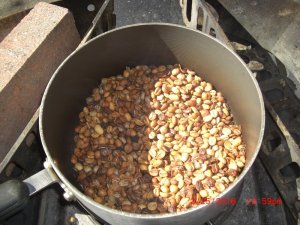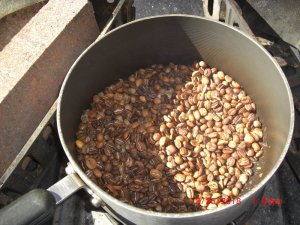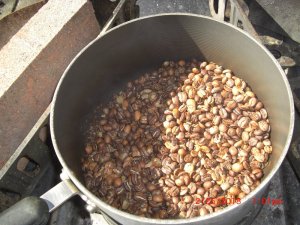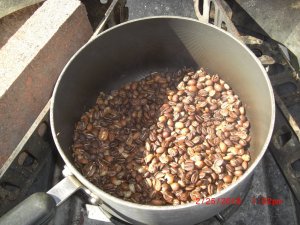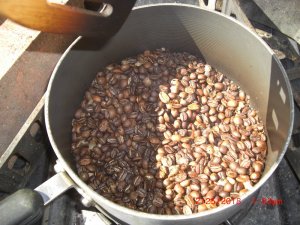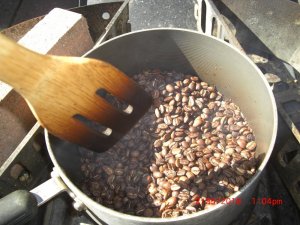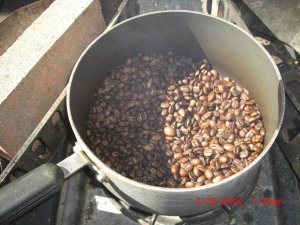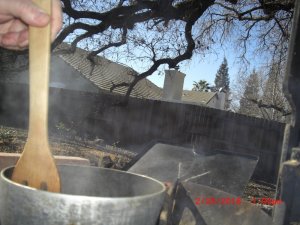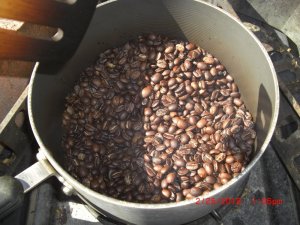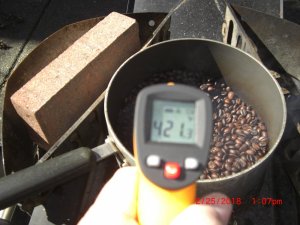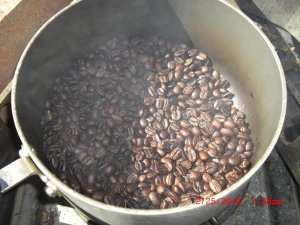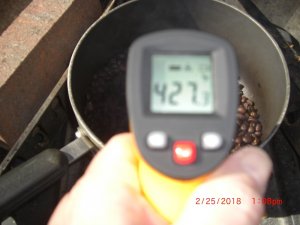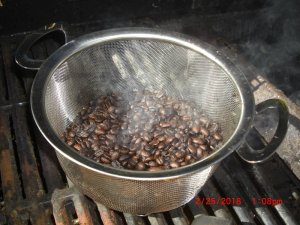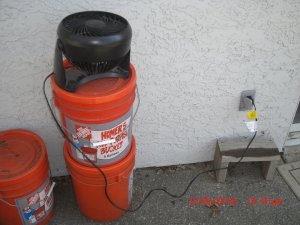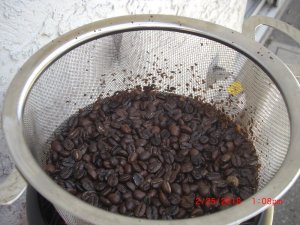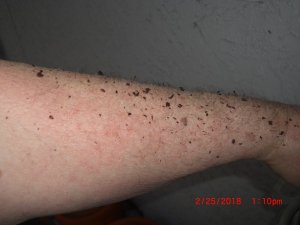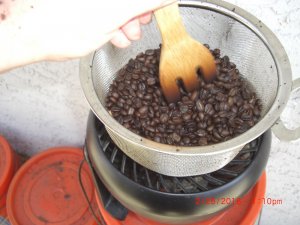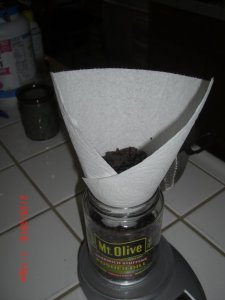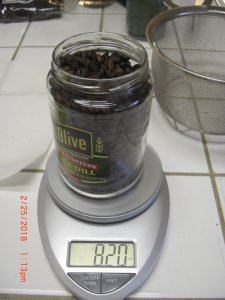This may be my last post on this thread. It is pic heavy and shows the whole prep, roasting, cooling, and resting process for those interested.
Before Christmas I picked up a 5 lb bag of Mexican green beans I ordered from Amazon for less than $6/lb. This is NOT the store-bought Mexican Organic I showed above for the off-gassing comparison. I was going to use home roasted Mexican to make gifts of Mexican Kahlua, but didn't really care for the taste on some samples I roasted, so I used a store-bought, pre-roasted Mexican Organic bean I knew would work for the gifts.
The Mexican bean I roast makes great espresso though, acceptable cold brew, and really good Mexican Irish Coffee (espresso, brown sugar, Irish whiskey, and whipped cream), although the other ingredients might make a slight influence on my taste buds.
Below is this morning's roast of 10 oz of Mexican green beans.
My original roasting set-up. Just a pan on the 12,000 BTU burner.

My second roasting set-up. I used one of the gas grill grates from my unused gas grill to try and more evenly spread out the heat. It worked, but too well, extending my roast times. Plus, I had to hold onto the pan handle the entire time.

I've settled on the roast set up below. I can just stir, take pics, whatever. My charcoal baskets and a brick make for a nice anchor. I don't have to hold onto the pan at all.

Pan pre-heated on high heat to 450F+. Ready to load the beans.

Green Mexican beans loaded.

Start timer.

Stir continuously. Here are the beans at 1 minute. Any brown you see at this point is chaff on the bean:

Keep stirring. I use kind of an "S" pattern as I stir. At 2 minutes, some beans are starting to scorch. I turn the heat down to "medium" when I see it happening.

Keep stirring. At 3 minutes the scorching wasn't slowing down, so I turned the heat to low. Notice how the beans are already changing color from light green to greenish-yellow.

Keep stirring. At 4 minutes the color change is quite noticeable.

Keep stirring. At 5 minutes, the beans are well on their way to being roasted. You'll be getting some smoke, and chaff starts to flake off the beans.

Okay, SWMBO is sending me on an errand. I'll be back in a little while to finish the thread in another post.
Before Christmas I picked up a 5 lb bag of Mexican green beans I ordered from Amazon for less than $6/lb. This is NOT the store-bought Mexican Organic I showed above for the off-gassing comparison. I was going to use home roasted Mexican to make gifts of Mexican Kahlua, but didn't really care for the taste on some samples I roasted, so I used a store-bought, pre-roasted Mexican Organic bean I knew would work for the gifts.
The Mexican bean I roast makes great espresso though, acceptable cold brew, and really good Mexican Irish Coffee (espresso, brown sugar, Irish whiskey, and whipped cream), although the other ingredients might make a slight influence on my taste buds.
Below is this morning's roast of 10 oz of Mexican green beans.
My original roasting set-up. Just a pan on the 12,000 BTU burner.
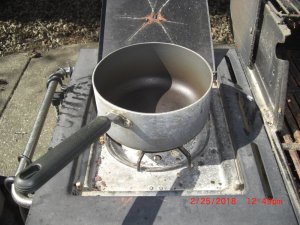
My second roasting set-up. I used one of the gas grill grates from my unused gas grill to try and more evenly spread out the heat. It worked, but too well, extending my roast times. Plus, I had to hold onto the pan handle the entire time.
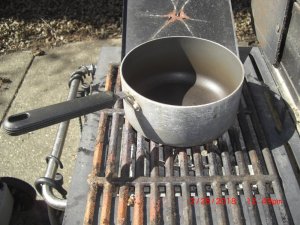
I've settled on the roast set up below. I can just stir, take pics, whatever. My charcoal baskets and a brick make for a nice anchor. I don't have to hold onto the pan at all.
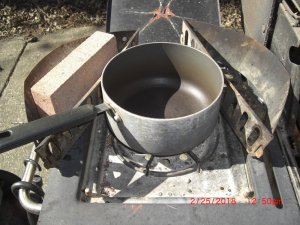
Pan pre-heated on high heat to 450F+. Ready to load the beans.
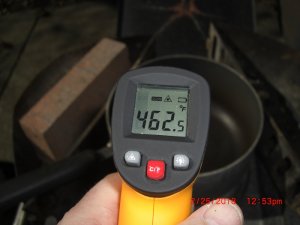
Green Mexican beans loaded.
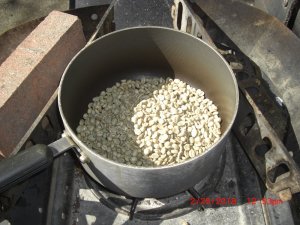
Start timer.
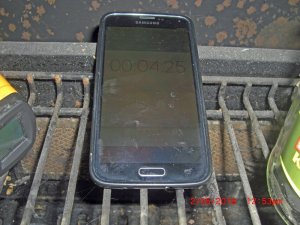
Stir continuously. Here are the beans at 1 minute. Any brown you see at this point is chaff on the bean:
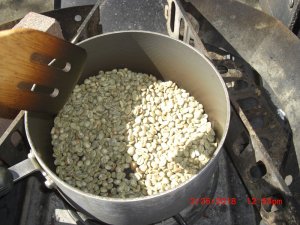
Keep stirring. I use kind of an "S" pattern as I stir. At 2 minutes, some beans are starting to scorch. I turn the heat down to "medium" when I see it happening.
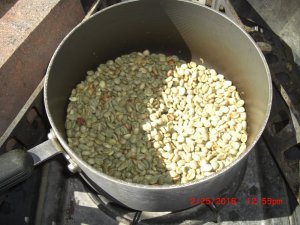
Keep stirring. At 3 minutes the scorching wasn't slowing down, so I turned the heat to low. Notice how the beans are already changing color from light green to greenish-yellow.
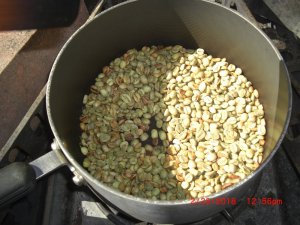
Keep stirring. At 4 minutes the color change is quite noticeable.
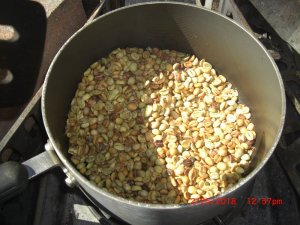
Keep stirring. At 5 minutes, the beans are well on their way to being roasted. You'll be getting some smoke, and chaff starts to flake off the beans.
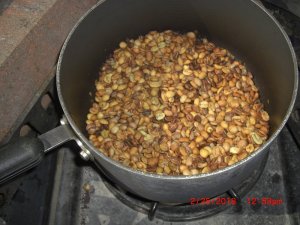
Okay, SWMBO is sending me on an errand. I'll be back in a little while to finish the thread in another post.


